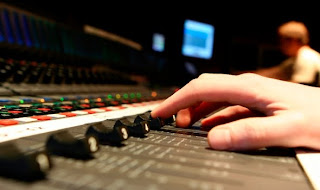
Today we've got a special class where we are going to get a chance to really apply our engineering and production skills as we work with Do D.A.T.
Dat will be coming in to do a recording session with us. He has sent the instrumental for a new song from his upcoming album, Oakland In Blue. As a class, we are going to run the recording session for Dat to record his vocals over the track. The focus today is on engineering and helping Dat to record the best performance possible. I will be picking engineers at random for the different sections of the song, so everyone needs to be on point and ready to go, in case I call you!
At this point, everyone should be comfortable doing all of these technical tasks:
- Setting up all the mics, cables, and headphones
- Creating a new Pro Tools session
- Creating and labeling audio tracks, including a Talkback track
- Assigning the correct microphone inputs to the tracks
- Setting good mic and headphone levels (NO CLIPPING!)
- Recording and playing back the tracks
- Saving the session
- Transferring the session to the Shared Media folder.
In addition to all these basic technical tasks, a professional engineer (i.e. someone who is PAID to do this) must have some other skills as well, including:
- The ability to make the artist feel comfortable
- The ability to keep the session moving as smoothly as possible
- The ability to give the artist feedback and help him/her make decisions about the performance
For those of you who are not engineering, I have a number of things that I need you to get done today. Priorities are:
- Update your BAVC profiles - upload an MP3 of at least one of your beats, add a picture, write something in your Bio
- Finish your remix of Rob's song - spend some time mixing (compress the vocal!!!), Bounce an audio file of the finished song
- Finish the Rewire Collabo assignment - finish it, mix it, bounce an audio file and give the audio file to your partner (the person whose drums you used)
























